Scattered across the city of Kolkata fortunately are quite a handful of pre-Independence eateries which are still up and running successfully. From being present since the pre-Partition days to post-pandemic days now, these outlets have stood the real test of time across eight decades and more. History, nostalgia and distinctive taste make these places timeless. Here’s a list of some of the most iconic eateries that were established before August 15, 1947.
Indian Coffee House
Originally called Albert Hall, the Indian Coffee House off College Street was founded in 1876 and eminent personalities like Rabindranath Tagore and Netaji Subhas Chandra Bose frequented the eatery. Shut down in the 50s, workers thrown out of the Coffee Board came together to form the Indian Coffee House Workers Co-operative Society and reopened in the same location with the support of renowned regulars.
Since its inception, the Coffee House has been the breeding ground of several political and cultural movements, and many a literary magazine has been born out of the adda sessions here. The Bangladesh Muktijudhyo and even the Naxalite Movement in the early 1970s had its root in this Coffee House. The USP of this place still remains the students and intellectuals who occupy most of the tables generation after generation. Scholars, artists, politicians and writers including Ritwik Ghatak, Soumitra Chatterjee, Sunil Gangopadhyay, Shakti Chattopadhyay and Buddhadeb Bhattacharya have been patrons of this iconic cafe. Coffee House-er adda is still alive, albeit over Coffee House Infusion (black coffee), singara and sandwiches.
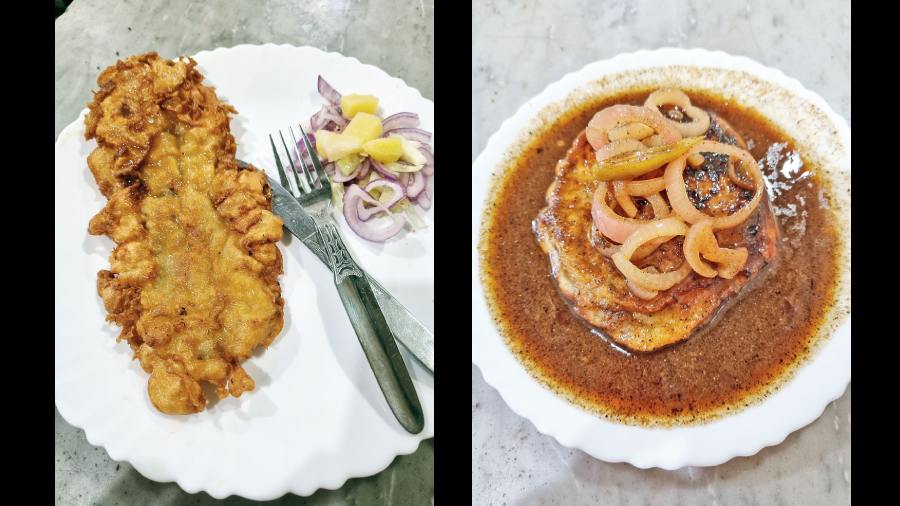
Prawn Cutlet (right) and Chicken Steak (bottom right) at Allen Kitchen
Allen Kitchen
Allen Kitchen, famous for its prawn cutlet, hardly needs an introduction for foodies. Started over 140 years ago by Jiban Krishna Saha, Allen Kitchen got its name from a Scot, Mr Allen, but the eatery was always owned by the Saha family. Once upon a time there used to be five outlets across the city, but has now reduced to one, near Sovabazar metro station. The secret recipes have remained unchanged and, hence the popular Prawn Cutlet or even their other cutlets and chops have retained the same flavour. They have also introduced steaks keeping the changing times in mind, which are very different from steaks as you know them otherwise, but are surely worth a try. When Allen had started, they used to make kebabs, which a few old customers still ask for.
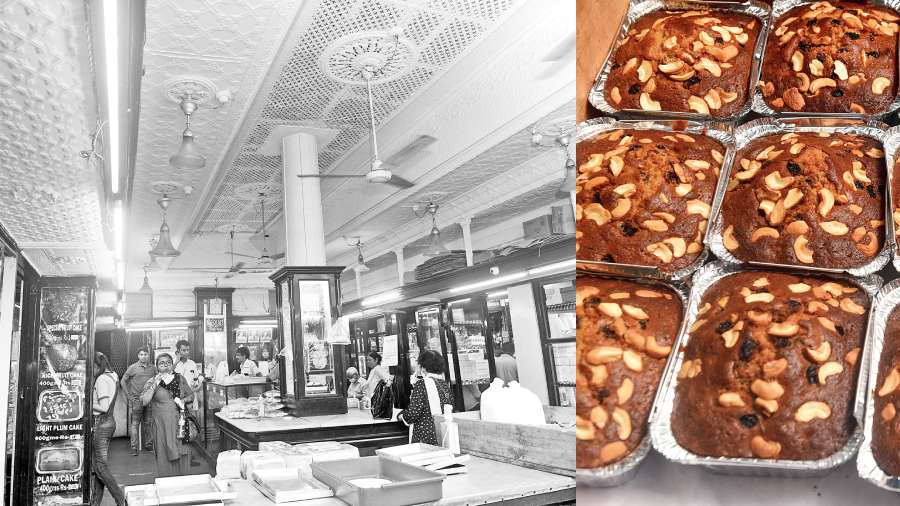
Nahoum and Sons and its Light Plum Cake
Nahoum & Sons
In 1902, Nahoum Israel Mordecai started Nahoum & Sons right in front of Hoggs Market (now the flower stretch). After Hoggs Market was rebuilt over five years from 1911-1915, the shop was relocated to its present location (F-20, New Market) in 1916. When Nahoum & Sons started, the confectionery churned out mainly sweet somethings like chocolates, marzipan and fudge. The longest-standing item on the menu is the Rich Fruit Cake, which has a shelf life of up to three weeks in winter. Brownie was added to their menu in 1982 and even that is made from an age-old recipe. The other bestsellers are the macaroon, jam tart and black forest pastry.
For many years, the largest orders were taken for the Republic Day celebrations at Raj Bhavan. Nahoum supplied not only a wide range of items but also had to strictly maintain a specific time for delivery.
The wooden cash box we see at the shop has been around since 1916 — that’s 106 years! The old wooden tables have been at Nahoum since it opened in 1902. Goodies like Fish Pantras, flavoured pastries, Almond Rings and Rum Balls are still kept in their age-old teak showcases.

Sherbet shop Paramount in College Square and its famous Daab Sharbet
Paramount
A trip to College Street is incomplete without a stopover at Paramount for a glass of sherbet. Started by freedom fighter Nihar Ranjan Majumdar in 1918, Paramount used to be a facade for a revolutionary den. Revolutionaries like Netaji Subhas Chandra Bose, Pulin Behari Das and Satin Sen held secret meetings behind the safety of the shop. Sherbet was an excuse but the real objective was the Swadeshi movement. Paramount boasts of a rich heritage that few places in the city can match. Apart from political leaders, Paramount has hosted Kazi Nazrul Islam, S.D. Burman, Satyajit Ray, Uttam Kumar, Suchitra Sen and many more. The list is endless.
While Suchitra Sen liked the Green Mango, Uttam Kumar preferred the Daab Sherbet. The last was introduced by the founder after Acharya Prafulla Chandra Roy had suggested that Paramount make a drink for students. Other popular flavours are Cocoa Malai, Green Mango and Vanilla. You can also carry bottled syrup home too.
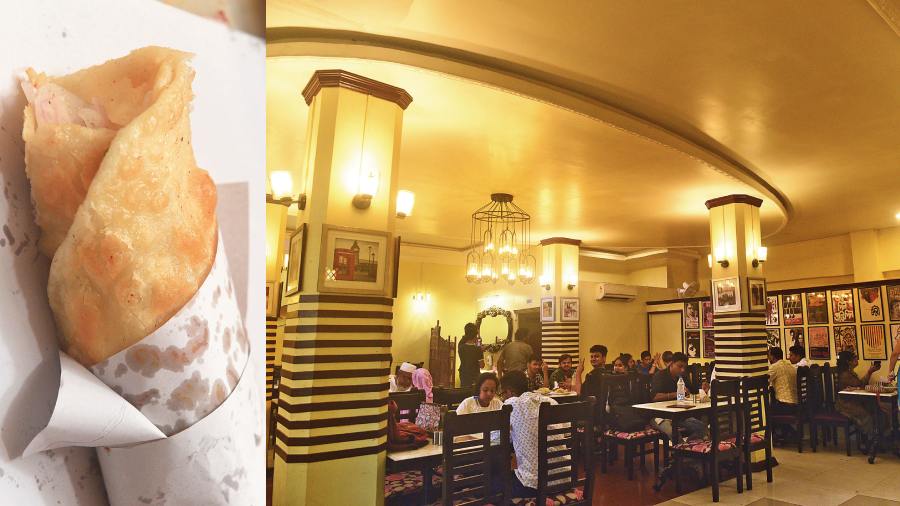
Nizam’s restaurant and its famous kathi roll
Nizam’s
They are the inventors of kathi kebab rolls. Set up in 1932 on Hogg Street in the New Market area by Raza Hassan Saheb, it was named Nizam after his only son. At that time three varieties of kebabs were available: mutton, beef and khiri (cow udders). History has it that one day a customer, a British, was in a big hurry and he asked for something light and dry and minimally spicy that he could take away. That’s how Nizam’s famous roll was invented. Since the British didn’t want mutton or beef, small bits of chicken were taken from the day’s curry, deboned and wrapped in a paratha and served. Later, the same technique was applied to make other rolls. In 1964, chicken rolls were added and the use of iron skewers was discontinued. Bamboo sticks replaced the iron skewers, adding the word kathi (stick) to the roll.
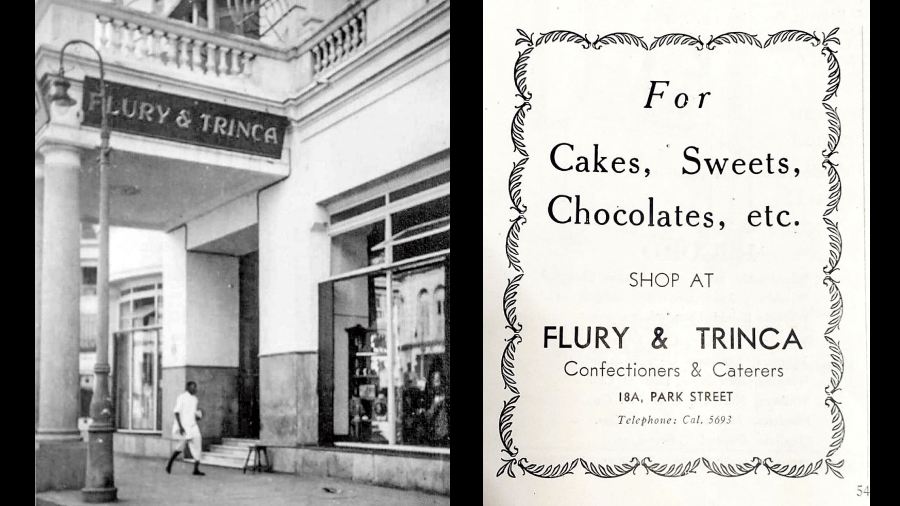
The old Flury & Trinca establishment and its menu card.
Flurys & Trincas
Quinto Cinzio Trinca, Joseph Flury and his wife Frieda became business partners back in 1927 during British rule and together they started Flury & Trinca, a tea room and confectionery on Park Street. After a decade, the partnership broke and they parted ways and Mr and Mrs Trinca opened Trincas diagonally across the road from Flurys.
After running Trincas for 20-odd years, they sold it to the current owners, the Puris, in 1959. Flurys, on the other hand, remained with the original owners till 1965, when they received “an offer he couldn’t refuse” from young Jit Paul (who had then started Park Hotel), as mentioned in the book Flurys of Kolkata: The Cake That Walked.
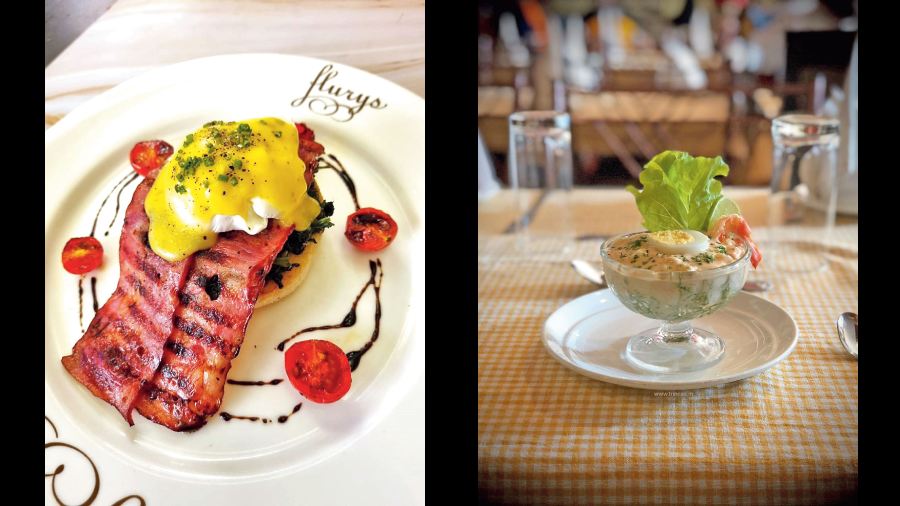
Eggs Benedict at Flurys and Prawn Cocktail at Trincas are two of their signature dishes today
The independent establishments have remained popular with Kolkatans and travellers, including Bollywood celebrities. The classics at Flurys remain the English breakfast, Rum Balls, Eggs Benedict, Baba Cake and assorted pastry cubes. At Trincas its Prawn Cocktail and Chicken Ala Kiev keep bringing back loyalists.
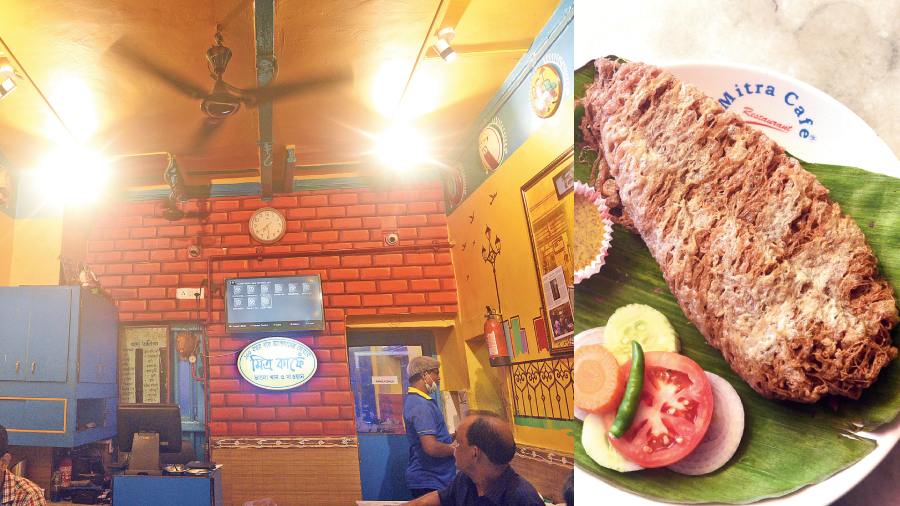
The reputation of Mitra Cafe’s Kabiraji is a formidable one
Mitra Cafe
When Mitra Cafe was started in 1920 by Sushil Roy with one cook and a helper, the menu was crisp — fish fry, kabiraji, pudding and a few gravy items. The shop near Sovabazar Metro station was originally owned by Dhanesh Mitra, and the name was retained also to signify a cafe for friend (mitra). After Roy’s death, the shop was run by his wife Gita and it was during this period that the shop reached its peak. Kabiraji, Fish Fry, Brain Chop, Mutton Chop and Mutton Afghani remain the hot favourites still. Changing the menu isn’t much of an option since the regulars keep coming back for all these popular items. However, they now have several outlets across the city.
Uttam Kumar was known to frequent Mitra Cafe during his visits to Star Theatre.
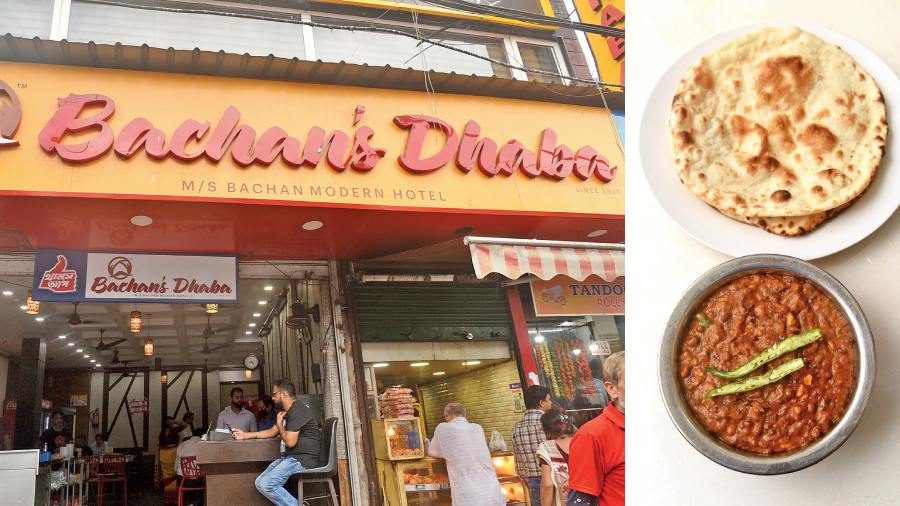
Bachan’s Dhaba’s most famous item is Tadka, which has been on its menu since the beginning
Bachan’s Dhaba
Established in 1927 by Bachan Singh, Bachan’s Dhaba at T39A Rash Behari Avenue is one of the oldest and most iconic dhabas in the city. Bachan, who used to run taxis back in the city, had started this dhaba with Tadka-roti on the menu. At 95 now, the eatery still serves the iconic Tadka without any change in its recipe. Amitabh Bachchan is said to have visited the dhaba when he worked in Kolkata. Currently in its 95th year, it is managed by the fourth generation. Bachan Dhaba remains the go-to spot for day and late-night visitors alike.
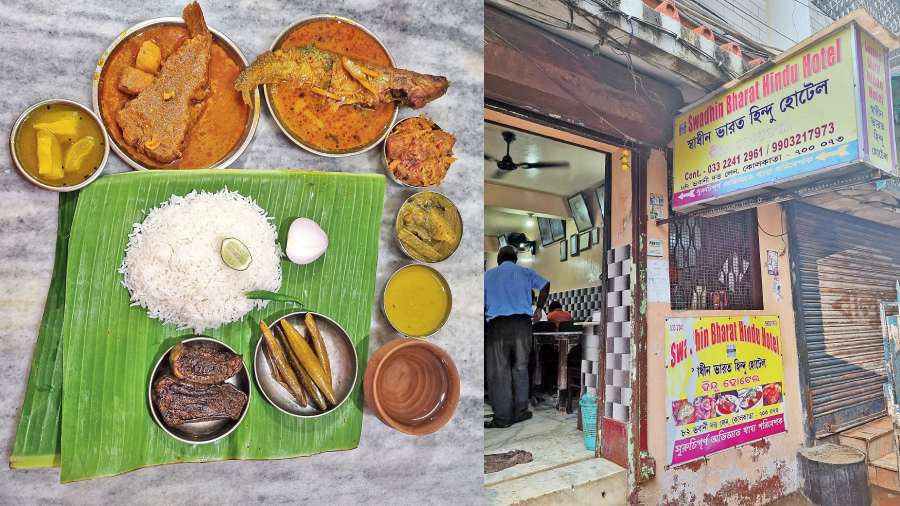
Swadhin Bharat Hindu Hotel has been serving its traditional items Puisaager Chochchori and Uchchhe-Shukto since time immemorial
Swadhin Bharat Hindu Hotel
Pice hotels in Kolkata offered more than just economical food during the Indian Independence movement. One such iconic eatery is the Swadhin Bharat Hindu Hotel, originally known as Hindu Hotel, which opened its doors back in 1927 at 8/2 Bhawani Dutta Lane. The hotel was a ruse and worked both as a hideout and a venue for secret meetings of revolutionaries with a back exit that led to a secret passage outside in case there was a British police raid. During one such raid the founder of the hotel, Mongobinda Panda, was brutally beaten up by the British cops but he didn’t allow them to enter till the revolutionaries had escaped safely.
Netaji Subhas Chandra Bose was a regular visitor and loved the Puisaager Chochchori, which remains a hit on the menu till date. He would visit during his Presidency College days and also after becoming the mayor of Kolkata Municipal Corporation. He had once brought Chittaranjan Das along for a meal. On August 15, 1947, Swadhin Bharat (Independent India) was added to the existing name of the hotel. Even today food is served on banana leaf and water in an earthen glass. Among other popular dishes are Uchchhey Shukto, Dim Bora, Rui Korma and Kosha Mangsho.
The establishment is run by the third generation now and every year the Indian flag is hoisted outside the eatery on Independence Day.
Pictures: Rashbehari Das, the author and TT Archives
The author is a public relations professional, aninveterate traveller and foodie, not necessarily inthat order
